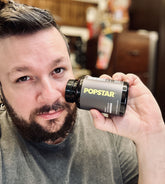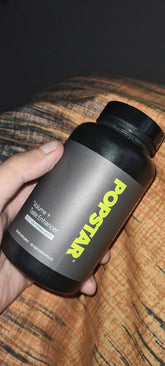“Uncut dick” refers to a penis that retains its natural foreskin, also commonly known as an uncircumcised penis. This aspect of male anatomy can be a source of curiosity, questions, and sometimes misconceptions. In this comprehensive guide, we’ll explore what it means to have an uncut penis, how to maintain proper hygiene, potential health considerations, and frequently asked questions surrounding the topic. Whether you’re new to the subject or seeking to brush up on men’s health knowledge, this article aims to provide valuable insights while maintaining an engaging, clear approach.
Table of Contents
- What Is an Uncut Dick?
- Anatomy of the Foreskin
- Benefits and Considerations
- Hygiene and Cleaning
- Sexual Pleasure and Sensitivity
- Common Conditions: Balanitis, Phimosis, and Paraphimosis
- Myths and Facts
- Frequently Asked Questions
- Emotional and Social Aspects
- Conclusion
What Is an Uncut Dick?
An uncut dick, or uncircumcised penis, is one in which the foreskin—the fold of skin covering the head (glans) of the penis—remains intact. Circumcision, conversely, involves the surgical removal of this foreskin. This procedure is sometimes performed for cultural, religious, or medical reasons. However, when a penis is uncut, the individual retains the foreskin along with its natural functions and sensations.
In many cultures, being uncut is the norm, while in others circumcision rates are high. Regardless of cultural practices, the foreskin plays a key role in penile health and sensitivity. It protects the glans, facilitates lubrication, and may enhance sexual experiences due to the abundance of nerve endings located within the foreskin. At the same time, an uncut penis can demand specific hygiene practices and raise certain health considerations that men should be mindful of.
Understanding what it means to be uncut goes beyond aesthetics—there are important physiological, cultural, and personal factors involved. Many men who have an uncut penis advocate for the natural sensation and protective benefits, while others may consider circumcision later in life for reasons such as chronic infections or preference. Ultimately, staying informed about what it means to have an uncut penis is a key step in making confident decisions regarding personal men’s health.
Anatomy of the Foreskin
The foreskin, also known as the prepuce, is a thin, flexible layer of tissue composed of skin and mucous membrane. It consists of two main surfaces: the external skin, which is continuous with the shaft of the penis, and the internal mucosal surface, which transitions into the inner lining. Between these two layers is the potential space that can retract when the penis is erect or pulled back. This dual-layer structure serves several important functions:
- Protection of the Glans: The foreskin shields the sensitive glans from friction, dryness, and external irritants. By maintaining a protected environment, it prevents irritation and helps retain normal moisture.
- Concentration of Nerve Endings: The foreskin contains numerous nerve endings that contribute to sexual sensation. This can make the glans more sensitive to touch and stimulation.
- Lubrication and Motion: As it retracts during arousal, the foreskin can facilitate smooth and comfortable sexual activity, often decreasing friction and adding to a more pleasant experience.
Another important structure to note is the frenulum, a band of tissue on the underside of the penis that helps secure the foreskin to the glans. This area can be particularly sensitive. For some men, the frenulum’s naturally tight or short configuration may cause discomfort, especially during erections, a condition sometimes referred to as frenulum breve.
Overall, this component of male sexual anatomy is both functional and sensitive. Knowing how it works and how to care for it is essential to maintaining healthy penile function across every stage of life.
Benefits and Considerations
Having an uncut penis carries a number of potential benefits but also requires men to be aware of certain considerations for optimum health. Some men appreciate the heightened sensitivity, while others find comfort in the protective nature of the foreskin. Below are some common benefits and factors to think about as you consider the uncut experience.
- Enhanced Sensation: The foreskin is home to various nerve endings that can increase pleasurable sensations during intimacy. This can enhance sexual experiences for both partners.
- Naturally Lubricated Environment: Because the foreskin covers the glans, it helps maintain moisture. This natural lubrication can reduce friction and make sexual activity more comfortable.
- Protective Function: The foreskin shields the glans from constant exposure and potential abrasions caused by clothing or environmental factors.
On the other hand, specific care is crucial. Poor hygiene habits can lead to the buildup of smegma, an accumulation of dead skin cells and natural oils, which can contribute to infections or unpleasant odors if not cleaned properly. There is also a slightly increased risk of certain infections, such as urinary tract infections and sexually transmitted infections, for men who are uncut and do not practice adequate hygiene. However, regular cleaning and safe sex practices can reduce these risks significantly.
It’s also worth noting that medical procedures like adult circumcision may become necessary if a man experiences recurrent cases of balanitis, phimosis, or other foreskin-related problems. While these conditions can typically be managed, it is important to recognize potential red flags early on and consult a healthcare provider for proper guidance. Ultimately, the choice to remain uncut or opt for circumcision later in life varies widely based on health, comfort, and personal values.
Hygiene and Cleaning
Proper hygiene is essential when it comes to maintaining an uncut penis. Since the foreskin naturally covers the glans, sweat, dead skin cells, and oils may accumulate beneath it if neglected. This buildup, known as smegma, can create unpleasant odors and potentially pave the way for infections. However, with the right approach, cleaning an uncut penis is typically straightforward and can be easily integrated into a daily shower routine.
Here are some detailed guidelines on best practices for hygiene:
- Gentle Retraction: Carefully pull back the foreskin to expose the glans. If the foreskin is still tight or not fully retractable (common in younger males), do not force it; mild tension is normal, and the ability to retract the foreskin usually increases with age. For adults, gentle retraction should be relatively easy; any excessive discomfort or pain may warrant medical advice.
- Use Warm Water: Clean the area beneath the foreskin with warm water. You can use a mild, unscented soap if desired, but avoid harsh products. Specialized “intimate cleansers” marketed for sensitive areas can also be used, provided they are free from irritating chemicals or perfumes.
- Rinse Thoroughly: Ensure any soap is rinsed off completely, as residual soap can cause dryness or irritation. Proper rinsing helps maintain the penis’ natural pH balance.
- Pat Dry: Once done, gently pat the area dry. Avoid vigorous rubbing with a towel because the skin on the glans and foreskin can be very sensitive. Keeping the area dry prevents bacterial or fungal growth.
- Return the Foreskin: After cleaning and drying, gently slide the foreskin back to its natural position. Failure to do so can result in discomfort or further complications, such as paraphimosis, where the foreskin gets stuck behind the glans.
Light, consistent hygiene habits will go a long way in preventing infections like balanitis. For most men, once or twice a day is sufficient, although the needs can vary based on lifestyle. For instance, those who sweat excessively or participate in strenuous activities might want to rinse more frequently. Additionally, practicing safe sex with condoms and regular STI check-ups further safeguards penile health.
Maintaining a clean environment not only helps reduce possible health issues but can also enhance sexual well-being and overall comfort. By appreciating the unique structure of the uncut penis, men can ensure that simple and consistent hygiene practices keep them feeling confident and healthy.
Sexual Pleasure and Sensitivity
One of the most commonly cited advantages of having an uncut penis is heightened sexual pleasure. Because the foreskin itself contains a high concentration of nerve receptors, it can contribute significantly to sensations of arousal and orgasm. Furthermore, the foreskin gliding up and down the glans during intercourse or manual stimulation may enhance natural lubrication, reducing friction and fostering a more pleasurable experience for both partners.
This focus on sensitivity can positively affect intimate relationships. Many men report that the foreskin’s presence creates a gradual, nuanced buildup of sensation, which can lead to extended foreplay and a potentially deeper sense of satisfaction. The ability to retract and cover the glans can also serve as a buffer against overstimulation, helping some men manage timing and endurance during sexual activity.
It’s important to note that experiences vary. Sensitivity levels differ from man to man, and factors such as age, general health, emotional well-being, and personal comfort all influence sexual pleasure. While the presence of a foreskin can be a boon for many, open communication with a partner and a healthy lifestyle remain core ingredients for a satisfying bedroom experience, whether one is circumcised or not.
Common Conditions: Balanitis, Phimosis, and Paraphimosis
Although an uncut penis is healthy and normal for many men, certain conditions can arise, especially when hygiene is inconsistent or if there is a predisposition to certain infections. Three of the most common foreskin-related issues include:
- Balanitis: This is inflammation of the glans, often accompanied by redness, itching, and sometimes discharge. Poor hygiene, fungal infections, or bacterial overgrowth can cause balanitis. Treatment typically involves improved cleaning routines, antifungal creams, or antibiotics if a bacterial infection is present.
- Phimosis: Phimosis occurs when the foreskin is too tight to be retracted fully over the glans. This condition may be physiological in younger boys and tends to resolve as they grow. However, in adults, pathological phimosis can be caused by scarring, infections, or skin conditions like lichen sclerosus. Treatments range from topical creams and manual stretching exercises to, in severe cases, circumcision.
- Paraphimosis: Paraphimosis is a painful condition in which the retracted foreskin cannot return to its normal position. It can restrict blood flow, leading to swelling and discomfort. Immediate medical attention is often required to reduce the foreskin manually or, in rare cases, with surgical intervention.
Awareness of these conditions can help men seek early intervention if they notice symptoms such as persistent itching, discomfort, changes in skin color, or difficulty retracting the foreskin. By adopting proper hygiene practices, remaining alert to changes, and consulting healthcare professionals promptly, men can often prevent or effectively manage these issues and maintain optimal penile health.
Myths and Facts
The uncut penis has historically been surrounded by cultural myths and half-truths. Sorting through these misconceptions helps demystify the subject and promotes open conversation. Below are some common myths contrasted with factual clarifications:
-
Myth: An uncut penis is inherently unclean.
Fact: With regular washing and proper hygiene, an uncut penis is not unclean. The foreskin does demand routine care, but consistent washing prevents smegma buildup just like any other part of the body. -
Myth: Circumcision is always the healthier option.
Fact: There are valid medical reasons to undergo circumcision, but many men remain healthy with an intact foreskin throughout life. Both choices can be perfectly healthy if a man practices proper hygiene. -
Myth: Having an uncut penis drastically increases STI risk.
Fact: While some studies indicate a marginal increase in STI risk for uncircumcised men, safe sex practices such as consistent condom use and regular STI screenings drastically reduce infection rates for both cut and uncut men. -
Myth: Foreskin removal doesn’t affect sexual sensation.
Fact: Many men and studies suggest that the foreskin’s nerve endings can affect how sexual pleasure is experienced. However, sexual satisfaction depends on a myriad of personal, physical, and emotional factors.
Understanding the difference between myth and medically informed fact empowers men to make conscious decisions about their bodies. Cultural perceptions vary significantly, so it’s always beneficial to consult professional health sources or discuss concerns with a qualified clinician rather than relying on hearsay or outdated myths.
Frequently Asked Questions
Is it normal if my foreskin doesn’t fully retract?
Yes, it can be normal for the foreskin not to fully retract in younger males. Complete retraction may happen later during puberty. In older males, if the foreskin remains persistently tight (phimosis), you might consider consulting a healthcare provider. In many cases, manual stretching exercises or topical treatments can alleviate mild to moderate phimosis.
Will an uncut penis always be more sensitive?
Men with a foreskin often report a heightened level of sensation rooted in the numerous nerve endings of the foreskin. However, the degree of sensitivity greatly depends on individual factors, including overall health, age, and personal anatomy. Sensitivity experiences may vary from one person to another; some circumcised men also express high levels of sexual pleasure.
Can an uncut penis increase the risk of infections?
Poor hygiene can make an uncut penis more prone to infections like balanitis or candidiasis. However, men who practice consistent cleaning, safe sex, and routine medical check-ups can keep these risks low. Establishing a simple, regular hygiene routine is the primary way to protect against common infections.
Do I need to use special soaps or cleansers?
Not necessarily. Warm water and mild soap are often sufficient. Some individuals prefer unscented, gentle cleansers formulated for intimate areas. The key is avoiding harsh chemicals and fragrances, which may irritate the delicate skin under the foreskin. When in doubt, consult a healthcare professional for personalized advice.
Does being uncut affect fertility?
No, being uncut typically does not impact fertility. Fertility is primarily influenced by sperm quality and reproductive health factors, including hormonal balance and the presence or absence of other medical conditions. Having a foreskin does not, in itself, hinder a man’s ability to father children.
Could circumcision become necessary later in life?
Yes, some men may choose or need to undergo circumcision later in life, often as a result of chronic infections, phimosis that doesn’t respond to other treatments, or personal preference. This decision is best made in consultation with a healthcare provider who can advise on alternatives and potential outcomes. In many cases, appropriate care and timely treatment prevent the need for surgical intervention.
How can I talk to a partner who prefers circumcision?
Open communication is vital. Discuss the reasons behind their preference and share any concerns or fears you might have. Men’s health and sexual experiences are deeply personal, so jointly exploring information, statistics, and possible compromises can bring clarity. It’s crucial that both partners feel comfortable and supported when it comes to intimate decisions.
Should I be concerned about odors?
Mild natural odors are normal for the male genital area, especially at the end of a busy day. Odors that become strong or unpleasant typically indicate that more thorough or more frequent cleaning is needed. If a foul odor persists despite proper hygiene, it could be a sign of bacterial or fungal infection, and you should consider consulting a medical professional.
Emotional and Social Aspects
Men’s relationships with their bodies are influenced by personal identity, cultural norms, and social expectations. For some men, being uncut is a point of pride that underscores their bodily autonomy and sense of natural identity. For others, anxiety or self-consciousness can arise if they feel different in a cultural context where circumcision is the norm.
Open conversations with partners, friends, or a counselor can help navigate any uncertainties or personal misgivings. If you feel pressure due to external opinions or misconceptions, finding reliable medical information and speaking with a qualified professional may alleviate concerns. Ultimately, emotional well-being plays a major role in overall men’s health, and feeling confident about your natural anatomy often translates to better sexual experiences and personal satisfaction.
Conclusion
In summary, an uncut penis (uncircumcised penis) involves the retention of the foreskin and carries unique benefits and considerations. By prioritizing proper hygiene, understanding potential foreskin-related conditions, and debunking common myths, men can achieve and maintain optimal health. Emotional and social factors also play a role in how individuals perceive themselves and their bodies, making open discussions and continual learning essential. Whether you’re exploring this topic for yourself or simply expanding your knowledge, cultivating a mindful approach to men’s wellness can foster confidence, comfort, and better overall sexual health.




















































